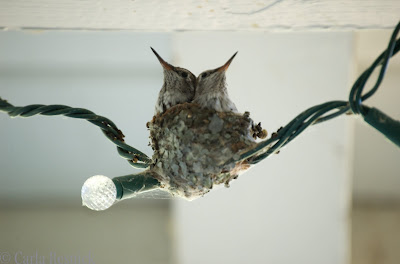 |
| Chicken number two |
 |
| Rooster |
The three chickens are getting used to things around here. They arrived one hot day in the summer. Now that we've had rain, frost, and a few good north winds with downpours, they're no longer running into their coop with the slightest bit of rain or wind. They generally spend most of the day outside, foraging for plants, bugs, worms, and seeds. They do get particularly excited about worms, so if I find one that is waterlogged on the pavement, I'll take it back to the birds where they pick it up and carry it around, keeping it from one another.
Last week they had a visit from a small hawk. I heard the hens making an uproar and looked out to see them in a flap with a small hawk. The hens fought the small bird off, sending it to a nearby branch, and when I went out to check on the birds the hawk flew off. Assessing the scene I noted the rooster napping nearby while the hens were in rather a froth about the fight. I felt a tinge of pride in those two hens. They all went into the coop for a while, and then came out again a bit later.
The rooster is working on getting his crow just right. He's not singing his song regularly, but more frequently now. Some days his tone is a little better than others. I think with practice he'll have a nice bel canto crow with which to express himself. His black feathers have a lovely greenish sheen in the light and he's learning to share!
The hens have established their peck order and it was heavily enforced for weeks, and now they've seemed to relax about it a bit.
One unexpected delight for me is the sound they make when they drink water. They dip their beaks into the container of water, then tilt back their heads and make a gentle tapping sound while they swallow the water. It is such a simple act, taking a drink of water, but I love watching and listening to them while they do it.
One recent weekend day I let them have free run of the entire back yard. Anywhere they wanted to go I'd let them. I was working out in the garden most of the day and they made their way to points previously not visited. They roamed around—a little cluster of black and white—and explored their larger world. They generally have about 100 ft of fence to explore, but that day they roamed near the apple trees, across the small lawn, and a bit into the main food garden. When they got back to their familiar rosemary bush in the afternoon, I started closing up the fencing so they'd be sure to find their way back into their coop when the time came.
I find it very beneficial to have the birds as part of the garden. I do not feel sentimental about them as pets (though I'm warned that may come) but I do like having them as workers in the garden. Like our cat makes our house feel warmer and comfortable to us, the chickens make the garden feel more alive to me. They are fertilizing and eating bugs, and creating movement out there. I can usually see them from my desk, and when I feel like taking a break, I'll head out to watch them for a while.
















.jpg)














.jpg)


.jpg)



.jpg)




.jpg)






 More chopping.
More chopping..jpg) Laying out the blanched grape leaves.
Laying out the blanched grape leaves.


.jpg)


